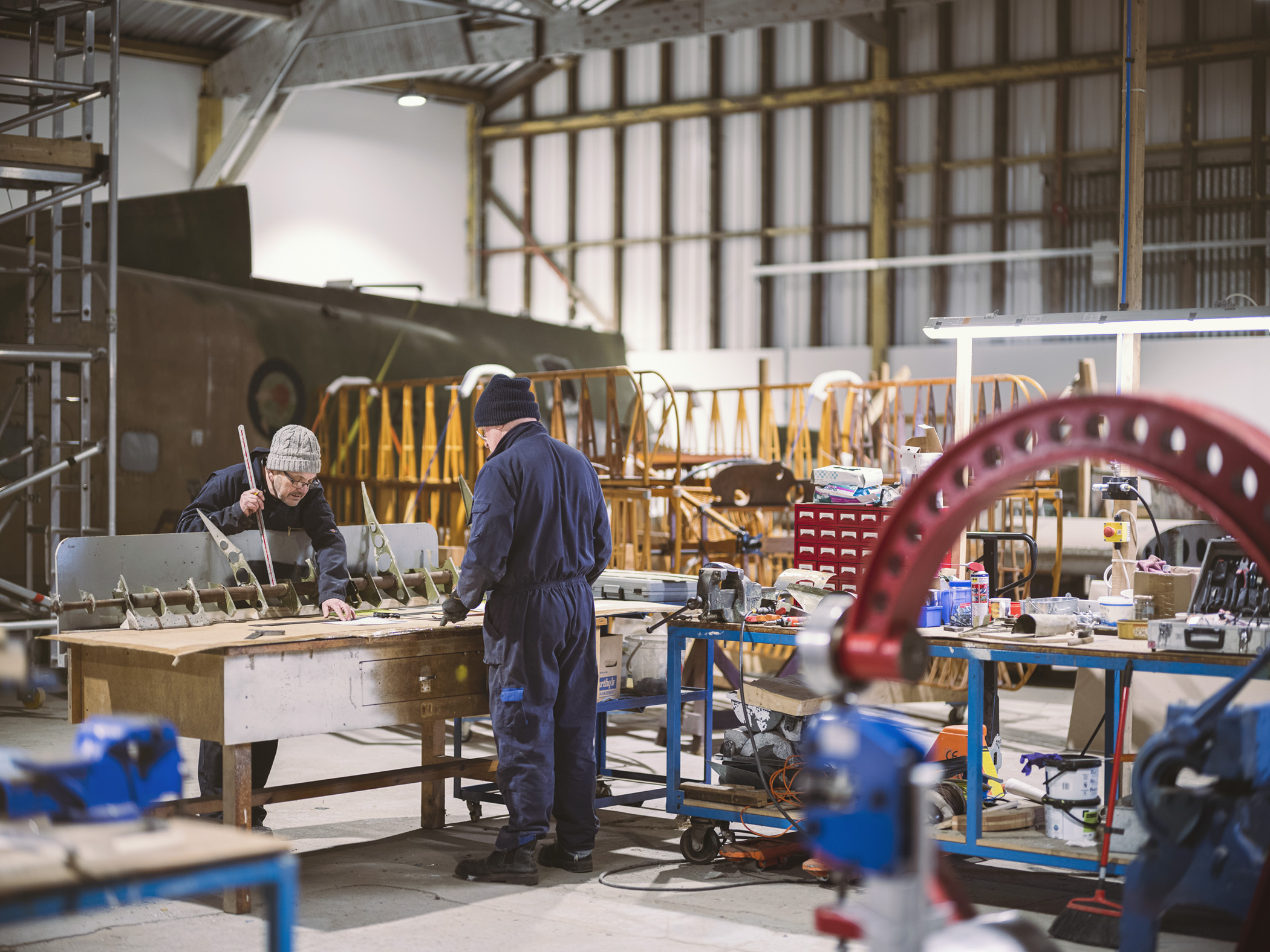Aerospace Bristol
Patchway, January 2022
Hanger 16M overlooks the site at Aerospace Bristol. In front of it sits a tapestry of aviation history synonymous with Bristol. It's the final resting place of Alpha Foxtrot, the last Concorde to be built and the last to be flown which, in November 2003, touched down for the final time a few hundred meters away. Beyond that the Aerospace Galleries guide visitors through a century of aeroplane manufacturing that was centered on the Filton site. Hanger 16M was built by the Royal Flying Corps in 1915, making it the oldest building on site. Described by English Heritage as “a rare surviving example of the earliest standard type of hangar” it was given listed status in 2014.
It's fitting that 16M is now home to the Conservation in Action Workshop. It was part of the Bristol Aircraft Company factory site and has seen use through both world wars. The volunteer team's work is currently centred around a Bristol Bolingbroke 9048, a Canadian built version of the Bristol Blenheim. David rescued the aircraft and over the years has slowly been restoring it using scans of original schematics and plans.
Paul Jones is the Conversation Manager at Aerospace Bristol and oversees the work that's carried out by the small team of 21 conservation volunteers. In the first lockdown the site was closed, halting conversation work. "In the main the impact was limited to the timeline". Having the space meant at least the aircraft were protected. "The aircraft are anything up to 107 years old, as long as they are under cover there is no impact to condition" Paul adds. The work the team carries out is technically challenging making it harder than other areas of the site to recruit. "Very few of our volunteers had worked on aircraft to the depth required on the conservation, however they have other engineering experience from various backgrounds" Paul explains. "So with a mix of careful selection of who does what and some conversion training we manage". The project to restore the Bolingbroke is daunting. While the main fuselage is in relatively good condition - constructed out of aluminium it won't erode - many smaller elements of the plane are damaged beyond repair or, in the case of wooden subframes, rotted away. The restoration is divided into smaller, manageable tasks and allocated to volunteers whose skills best fit the role. Losing volunteers would mean bottle necks in the process. Thankfully this has been avoided so far. "The majority of the conservation volunteers have returned" says Paul "[but] I have seen evidence of a few individuals not returning due to a bad experience with Covid or the fear of having one". Paul describes the volunteers as critical to the convervation work "They are the labour force, without them there would be no conservation".
For the volunteers themselves working on the aircraft provides opportunities. "I'm practical" Steve, a retired geologist explains, "I like doing things. And I'm good at woodwork, but I don't think they discovered that until I joined the team". At home Steve has a workshop that proved useful in March 2020. "In a way the lockdown period - I was one of the people that had to shield - was quite useful for me. I rebuilt two of the doors and then built from scratch two new doors". It's an interesting extension to the volunteering role. "It was a saving grace for me, it gave me something to do".
There was relief when the doors were finally reopened in July 2021. "It was great to get back in here, there was so much to do" says Steve, a retired R&D Engineer. He spent 36 years working for Hewlett Packard, some of that for Rolls Royce who were a customer. There he was working on the test bed for the Pegasus engine, so he has a background in aviation, albeit not directly. He started volunteering at Aerospace Bristol when he retired but it wasn't something he had planned. "I’ve never planned anything in my life! I was lucky in HP that I changed roles - it was such a big company back in the day. I never had a plan, just drifted on through enjoying life". And that certainly seems a key factor in volunteering, enjoying the role and the work. "I’m learning so much" he says of his role in the hanger. "Stuff like riveting, tin bashing. I never knew any of that before. We get trained up and then you're left on your own. And it’s nice to be left to get on with it." Paul oversees the whole restoration and assigns the jobs. "We get allocated a little project" Steve explains, "so for now that's the port aileron. Next week it’s some folded metal, trying to unbend those. All of us have a project to get on with and that’s a great way to work". It's the fulfilment and challenge that seems to offer common benefits to the roles. For many of the volunteers this was part and parcel of their careers and, possibly, could be lost when the time for retirement comes around. "You hear of people retiring and they just don’t know what to do with themselves" Steve reflects, "but i can’t imagine going back to work now".


